They Are Legion
I would hardly be the first—and certainly not the last—to point out that horror films and religion go together like peanut butter and jelly; nor would I be the first to note that a dime will get you a dozen of those particular peanut butter and jelly sandwiches. However, occasionally a film comes along that weds the two in a way that feels, if not necessarily groundbreaking, then at least interesting. St. Maud is such a film. Premiering in 2019 but not available in the US until this year due to COVID-19, St. Maud is a British psychological horror film that tells the story of our titular would-be saint’s descent into madness whilst working as an in-home hospice nurse for the terminally ill Amanda, a well known (and worldly) American choreographer. In doing so, it forgoes the traditional route of drawing its horrors from religious mythology (i.e., the Devil and demons) and positing religion itself as the only antidote to those horrors. This tradition is as old as the genre itself; we see it in the earliest vampire films, in which crucifixes and holy water never fail as means of warding off the unholy monsters.
More recently, we need only look to The Conjuring series for evidence of the formula at work. These films are so committed to the formula of “good religion” versus an evil defined in purely religious terms, that they have no qualms playing fast and loose with the truth, depicting the Warrens not as charlatans but heroes. This makes The Conjuring a particularly egregious example of the traditional, formulaic religious horror film. This type of film by nature requires the non-religious to suspend disbelief, but The Conjuring films go further by offering for our entertainment the fabricated exploits of two notorious frauds. The fact that hucksters like the Warrens are considered fitting protagonists serves to illustrate a broader point. Historically, and even now, most horror films operate with two assumptions: first, that religion (as well as its representatives, its institutions, and its adherents) are basically good, and second that the underlying mythos of religion (nearly always Christianity) is actually real.
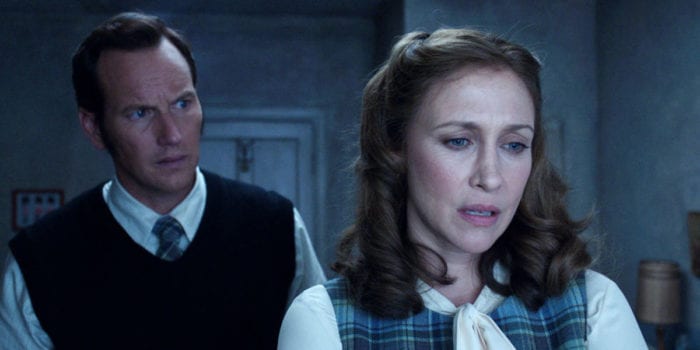
Pea Soup With a Side of Traditional Values
Indeed, these assumptions are at the very foundation of one of the genre’s all-time classics and perhaps the granddaddy of all religious horror films, The Exorcist (1973). For all its genuinely shocking and disturbing moments, and for all the controversy associated with it, is there a horror film that is ultimately more pro-religion than The Exorcist? Now, I am not suggesting that a horror film being pro-religion, whether subtly or overtly, is necessarily a fundamental flaw or somehow problematic; nor am I suggesting that a good horror film needs to be—or even should be—explicitly anti-religion. Indeed, a film may be either (or neither) and succeed or fail on its own merits as a film.
For example, at the opposite end of the spectrum from The Exorcist in its stance toward religion is Ken Russell’s The Devils (1971). Where The Exorcist vigorously affirms the righteousness and power of the Catholic Church and faith, The Devils is a scathing attack against the perceived hypocrisy and corruption of the Church. And yet, both are highly effective horror films. However, The Devils was rebuked not merely for its shocking and graphic imagery, but for employing that imagery in service of a profoundly anti-religious message. The Exorcist, on the other hand, while receiving largely superficial criticism for its more extreme elements (e.g., the crucifix masturbation), was mostly recognized as the essentially pro-religion film that it is. In truth, The Exorcist is—beneath the vomit and cursing—a fairly conservative (one might even argue reactionary) film.
However, that doesn’t change the fact that it is one of the greatest horror films ever made. Of course, most religious horror films aren’t The Exorcist. And it’s when these films do not so clearly stand on their other merits that the overreliance on the tropes of religious good vs evil begins to wear thin. It’s also why it’s refreshing when a horror film like St. Maud takes on that old-time religion without taking on those old-time clichés like upside-down crosses, creepy nuns, and possessed children speaking in tongues.
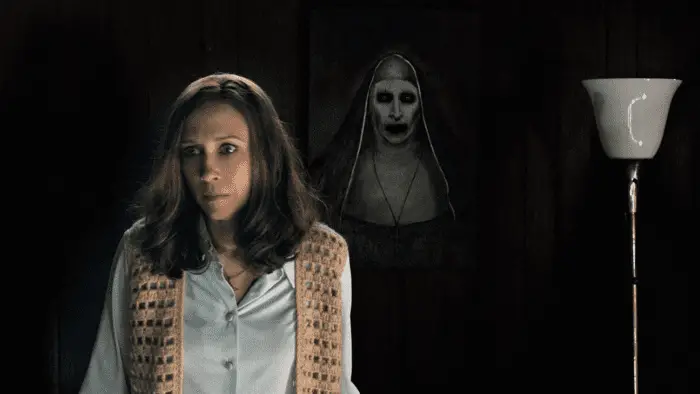
The UK: Land of Godless Heathens
Obviously, St. Maud is not the first horror film to approach religion from a critical perspective. There have been films in which religion is the evil (or at least the source of horror). As noted, The Devils is one; a few years earlier there was Michael Reeves’s Witchfinder General (1968), and a couple of years later there was Robin Hardy’s The Wicker Man (1973). Conspicuously, though not surprisingly, none of these films is an American production; this would suggest that, compared to the US, there existed in the UK a greater tolerance for criticism of organized religion (indeed, there likely still is, with St. Maud being a case in point).
In terms of more recent examples, the first that comes to mind is Ti West’s The Sacrament from 2013 (hey, an American movie!). One could argue, of course, that none of these films is necessarily antireligion, or at least not religion per se, but rather critical of the worst excesses of religion, of the perversion or manipulation of religion by unscrupulous hypocrites and the pathologically power-hungry. But, whatever the case, in these films it is religion itself (and again, its representatives, institutions, and adherents) that is the threat.
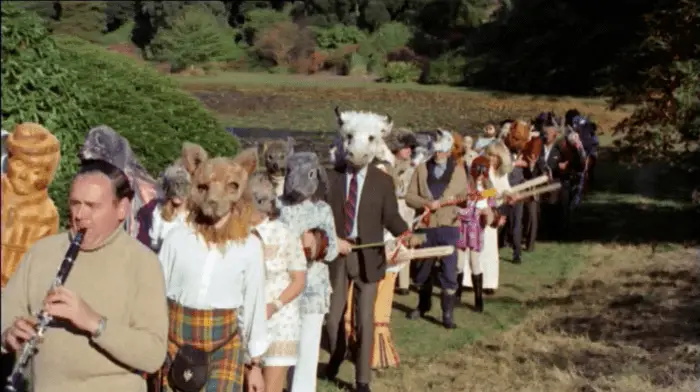
Her Master’s Voice
In one sense, St. Maud is in the same vein as these films; after all, religious belief is unquestionably a driving factor in the horrific tragedy that unfolds in the film. On the other hand, it is only a factor; the film is arguably as much, if not more, about mental illness (and to that we might add isolation and loneliness) as it is about religious fervor. Indeed, the nature and degree of Maud’s religious convictions surpass anything that might even reasonably be called fervor or devotion and cross into full-blown delusion and psychosis. This is depicted in numerous ways throughout the film, but one particularly memorable example is the scene in which God “speaks” to Maud. This occurs at Maud’s cramped and dingy apartment at the end of a night during which she has temporarily strayed from her righteous path—her own dark night of the soul.
Owing to a visual cue that recalls a shot from the film’s opening, I was half-expecting during this scene a sudden reverse shot from Maud to her POV that would reveal God as a giant cockroach. When we get no reverse shot at all (cockroach or otherwise), I was surprised. I wouldn’t say I was disappointed, but my initial thought was that it was a missed opportunity. After some consideration, I decided that perhaps it was wise not to show us Maud’s conception of God. For one, it helps to maintain an additional element of mystery. Second, by keeping the focus on Maud for the entirety of the scene, while we only hear God, the film further emphasizes the fact that this is very much all in her head. The scene becomes even more interesting knowing that the voice is lead actress Morfydd Clark’s, heavily modulated and speaking in her native Welsh.
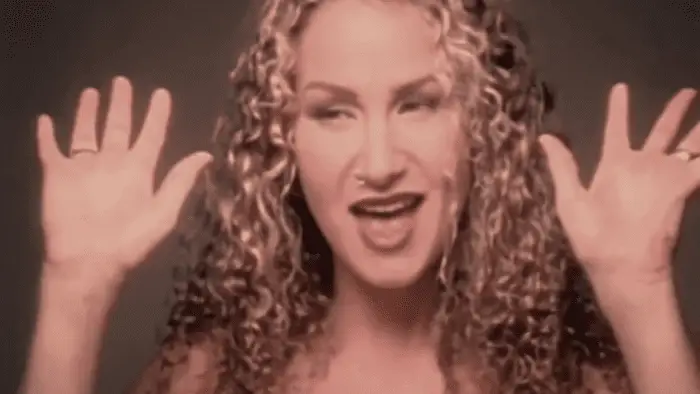
I Saw the Devil
Interestingly, later on, the film goes very much in the other direction, opting to visualize quite explicitly Maud’s distorted perception. Near the film’s conclusion, Maud goes to visit Amanda at her home, despite having recently been fired after a social gathering at Amanda’s home that ends in a very public rejection for Maud, who reacts…poorly. The scene begins grounded in reality, but as it quickly grows more emotionally fraught, it shifts; we suddenly see and hear Amanda as Maud—now fully broken from reality—does in this moment. No longer a bedridden woman dying of terminal cancer, Amanda appears as a terrifying demonic entity, complete with requisite supernatural strength, as evidenced when she appears to throw Maud halfway across the room.
It is during this scene that the film most closely resembles more traditional religious horror fare. As with the scene in which Maud hears the voice of God, I initially questioned the director’s choice here—albeit for precisely the opposite reason; I wondered whether it was wise to include the spectacle of Amanda in full-on demon mode in what had largely been to that point a relatively visually restrained film. Upon consideration, I decided that its inclusion—as well as that of some other explicitly supernatural imagery a little later in the film—ultimately makes sense. Giving the audience a glimpse of these overt visual manifestations of Maud’s insanity doesn’t undermine the more understated approach that precedes it; on the contrary, it complements it precisely by coming as a notable departure, one that signals a drastic escalation within the narrative. It also gives the audience a nice visceral jolt; sometimes we need a scare, even if it is of the more traditional variety. A descent into madness, after all, should be scary stuff.

Meet Me at the Waterfront After the Social. Bring Sunglasses.
Another difference between St. Maud and films like The Devils, Witchfinder General, The Wicker Man, and The Sacrament is that in these other films the abuse of religion by the powerful is the source of horror; in St. Maud, it is quite the opposite. The character of Maud is, if anything, largely powerless; in fact, her delusions of saviorhood can be seen as compensation for her own perceived lack of control. Additionally, Maud is no hypocrite; her religious belief, though fanatical, is genuine. And it’s important we know this for the film to have the emotional impact it does. One way we can be assured of her sincerity is through the film’s use of voiceover that makes us privy to Maud’s frequent chats with The Almighty. While I usually don’t care for the extensive use of voiceover in films, in this case it feels appropriate, considering the role of prayer in the film; after all, what is prayer but an internal monologue?
Partly through this device, we come to understand it is Maud’s belief that sustains her; it is, no doubt, the only thing sustaining her. And this only makes her case that much sadder. What Maud sees as her literal saving grace is, in fact, the cause of her undoing; and come undone, she does. While one can imagine that Maud sees herself as some kind of martyr, in truth she is not and never could be; martyrs don’t kill themselves, suicide being perhaps the most grievous sin one can commit. However, by the film’s end, her mental state is one of such confusion she fails to recognize the fatal flaw of her plan. According to her own belief system, by choosing to literalize her rapture in an act of self-immolation, she necessarily forfeits the very thing she wants most: nearness to God.
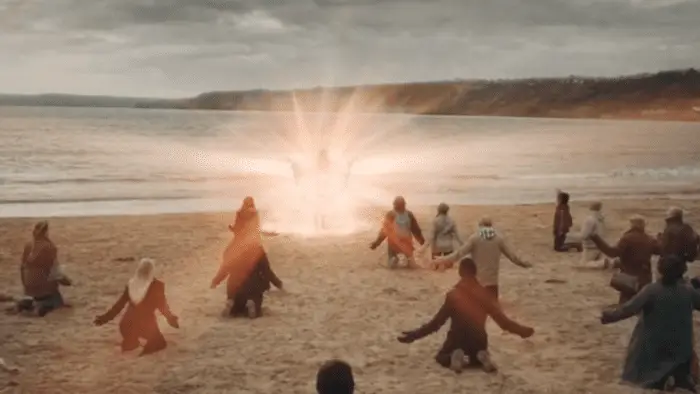
Mirabile Dictu
Significantly, in theological terms, eternal separation from God is the most tragic outcome possible; however, even removed from a strictly religious context and conceived of in more humanist terms, to be cut off from connection of any kind is inherently and deeply tragic. This is especially true for someone already as pathologically lonely as Maud. While Maud’s desperate longing for connection is one dually defined by religious ardor and mental illness, it is nonetheless one that even the most secular and sober-minded among us can readily recognize and understand. While the explicitly religious nature of Maud’s delusions is an integral part of the film both narratively and thematically, I appreciate that it can–at least in part–still be understood outside the very specific context of religious extremism.
St. Maud is a film that deftly highlights the ways in which we can attach so much unwarranted meaning to even the smallest words or actions of others. In this case, if one were to pick a single moment that seems to cement for Maud her purpose, it is when Amanda almost offhandedly (and perhaps even half in jest) refers to Maud as her “savior”. With this one remark, Amanda quite unknowingly affirms Maud’s already delusional thinking, setting both Maud and herself on the path to tragedy. Of course, since few of us are as profoundly disturbed as Maud, rarely do our self-serving (mis)interpretations have such dire consequences. However, it is something nearly everyone has been guilty of to some degree at one time or another; especially in those moments when, like Maud, we are feeling–perhaps out of loneliness or insecurity–particularly in need of affirmation. The film’s incorporation of such an eminently human foible affords it an even greater pathos, as we are able to find a point of connection where we otherwise might not.
As good storytelling so often does, St. Maud allows us as an audience to find the universal in the specific. And because the film eschews the usual supernatural trappings of the religious horror subgenre, no suspension of disbelief is required; this alone gives St. Maud an advantage over so many other religious horror films. Add to this the obvious talent involved here—this is an astounding feature debut for writer/director Rose Glass, and Morfydd Clark is fantastic as Maud—and the result is an unusually effective religious horror film. A minor miracle indeed.
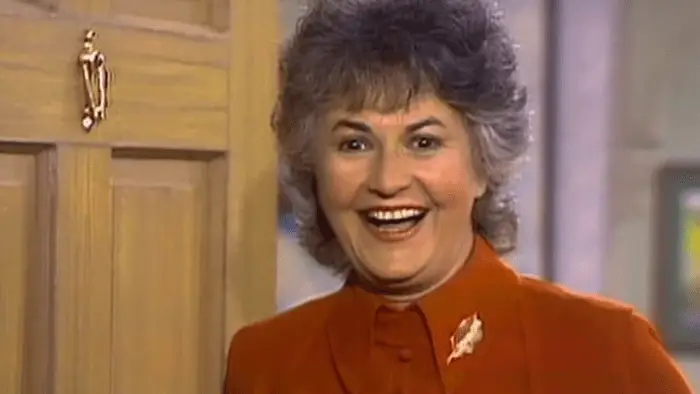



Another movie I hadn’t known about. It sounds interesting so I’ll check it out!